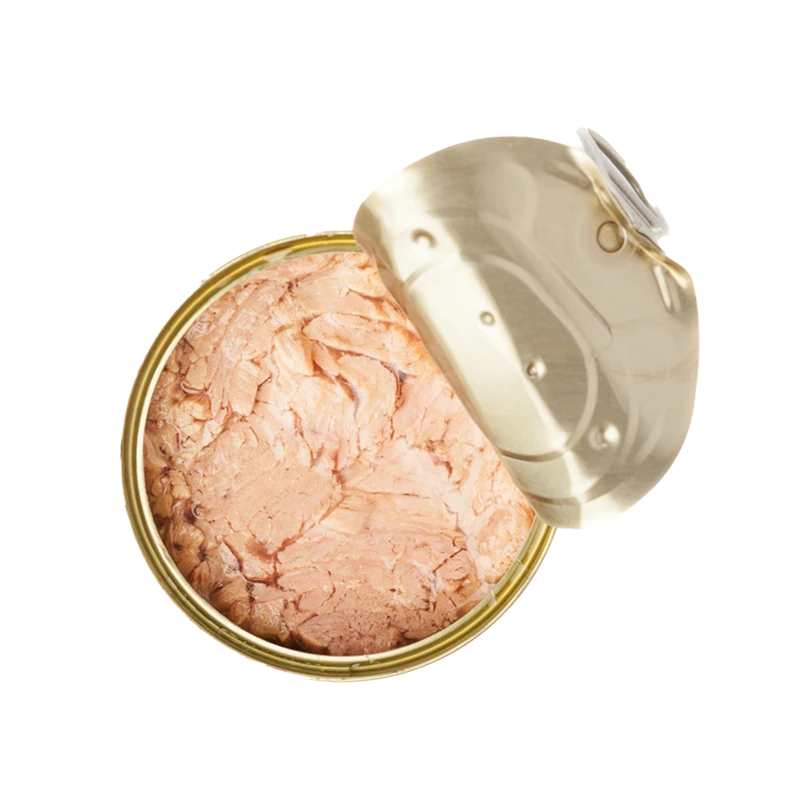Canned Tuna — Nutrients, Health Benefits, And Shopping Tips

Written by Listonic Team
Last update on September 4, 2024
Nutrients
Nutrition facts
Amount per 100 g
Calories
🔥 128 kcal
| Nutrition per: 100 g | Value | % Daily Value* |
|---|---|---|
| Carbs | 0 g | - |
| Fiber | 0 g | - |
| Sugars | 0 g | - |
| Glycemic Index | 0 | - |
| Protein | 29 g | 58% |
| Sodium | 384 mg | 16.7% |
| Total Fat | 1 g | 1.28% |
*The % of Daily Value (DV) tells you how much a nutrient in a serving of food contributes to a daily diet. 2,000 calories a day is used for general nutrition advice.
29 g
💪 High Protein Content
Key takeaways
Health benefits
- High in protein, essential for muscle growth and repair.
- Rich in omega-3 fatty acids, supporting heart health, reducing inflammation, and improving brain function.
- Contains essential vitamins and minerals such as Vitamin D, B12, and selenium, which support overall health and well-being.
- Convenient and shelf-stable, providing a quick and nutritious protein option.
Health risks
- Mercury content which is a concern, particularly with larger species of tuna, and can pose health risks if consumed frequently.
- High sodium content in some canned varieties, particularly those packed in brine, which can contribute to hypertension and increased cardiovascular risks.
- Potential for BPA exposure from the lining of some cans, which has been linked to potential health risks such as hormonal imbalances.
- Risk of contamination with harmful bacteria or toxins if the can is damaged or improperly processed.
How to choose canned tuna
In the market for canned tuna, focus on finding chunks that are light in color and stored in water or natural oils to best preserve flavor and texture. The aroma should be mild and fresh. Ensure the tuna is sustainably caught to support environmental stewardship.
Eschew tuna that is dark in color or has a pronounced fishy smell, as these are clear indicators it is not fresh. The best canned tuna should have firm pieces that flake neatly and possess a clean, delicate flavor.

How to store canned tuna
Keep canned tuna in a cool, dry place before opening. After opening, transfer the tuna to a resealable container and refrigerate. It can stay fresh for up to three days.
Leaving tuna in the original can after opening can affect its taste. Use a non-metallic container to preserve its quality. Seal the container properly to keep out odors and moisture. Clean utensils help prevent contamination and maintain freshness.
✅ Extra Tip
How long does it last?
Canned tuna can last for 1-2 years when stored in a cool, dark place. Once opened, it should be refrigerated and used within 3-4 days. Transfer it to an airtight container after opening to maintain its freshness.
What to do with leftovers?
Leftover canned tuna can be used in a variety of dishes. Mix it into a salad with greens, vegetables, and a tangy dressing for a light meal, or use it as a filling for sandwiches or wraps with your favorite toppings.
Use canned tuna in pasta dishes, where it can be tossed with olive oil, garlic, and herbs for a simple yet satisfying meal. It can also be used to make tuna cakes or patties, mixed with breadcrumbs, eggs, and seasonings, then fried or baked. If you have a lot of canned tuna, consider making a tuna casserole with pasta, cheese, and vegetables, or using it in a tuna melt with melted cheese on bread. Canned tuna can also be added to casseroles or rice dishes for extra protein, or blended into a tuna spread with mayonnaise and pickles for a quick snack.
👨⚕️️ Medical disclaimer
Discover products from other categories
Listonic Team
Fact-checked
Our editorial team checked this article to make sure it was accurate at the time of publishing it.
Get the top-rated shopping list app

canned tuna
1 piece







